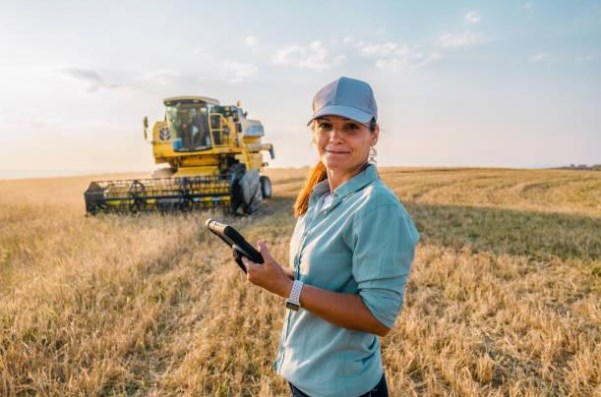Soy is one of the most nutritious cereals that is gaining popularity worldwide. Sustainable soy refers to soy that has been cultivated through sustainable methods such as crop rotation. These farming methods are good for the environment since they help protect biodiversity.
For example, sustainable farming of soy through using cover cropping can help improve soil structure and soil quality. This, in turn, helps seal carbon dioxide and help the soil retain more water. Read on to find out more about how sustainable soy can help create a greener environment.
Benefits of Sustainable Soy to The Environment
Below are some ways sustainable soy helps create a greener environment, therefore protecting biodiversity.
1. Reduced Deforestation
Sustainable soy farming is crucial to promoting a more sustainable food system and protecting our planet’s natural resources. One of the most significant benefits of sustainable soy is its ability to reduce deforestation, a major issue in countries like Brazil and Argentina. Sustainable soy farming practices use existing farmland, which helps protect the world’s forests and the countless species that depend on them for survival.
2. Lowers Greenhouse Gas Emissions
In addition to reducing deforestation, sustainable soy contributes to the fight against climate change by lowering greenhouse gas emissions. Sustainable soy farming practices use natural fertilizers and the no-till method, which helps reduce emissions and improves soil health.

This means that choosing sustainable soy products can be an effective way for consumers to reduce their carbon footprint and support a more sustainable food system. Ultimately, making sustainable choices is integral to protecting our planet’s natural resources and combating climate change.
3. Promotes Biodiversity
Another essential benefit of sustainable soy farming is its ability to promote biodiversity. Using natural fertilizers and sustainable farming practices such as crop rotation creates a more diverse ecosystem on farmland. This ecosystem supports a range of species, including beneficial insects and pollinators, which are essential for maintaining healthy ecosystems.
Conversely, sustainable soy farming practices often involve cover crops, which help prevent soil erosion and support healthy soil microbiomes. These practices help create a more sustainable and resilient food system, benefiting farmers and consumers.
4. Prevents Soil Erosion
Last but not least, sustainable soy farming helps to prevent soil erosion, which is crucial for maintaining long-term productivity and sustainability. Sustainable soy farming promotes conservation tillage and cover crops, which protect the soil from erosion and improve soil health.

By preventing soil erosion, sustainable soy farming helps farmers maintain the productivity of their land for generations to come, ensuring a stable food supply for the future. This is critical to building a sustainable food system and protecting the planet’s health.
Challenges Facing the Production of Sustainable Soy
Sustainable soy production faces several challenges, including high demand for soy products, limited availability of sustainably sourced soy, and a need for more awareness about the importance of sustainable soy. These points are further discussed in in-depth below.
1. High Demand for Soy Products
Sustainable soy production encounters challenges that could hinder efforts to establish a more sustainable food system. One of the significant challenges is the high demand for soy products that can push farmers to ramp up production unsustainably.
This demand can result in harmful farming practices such as deforestation and the use of toxic chemicals, leading to adverse environmental impacts. These practices can cause long-term damage to the ecosystem and reduce the food system’s sustainability.
2. Limited Availability of Sustainably Sourced Soy
Moreover, sustainably sourced soy is limited, which poses another challenge to sustainable soy production. A lack of knowledge and resources among some farmers can make it challenging to implement sustainable farming practices. This situation can cause difficulty in meeting the demand for sustainably sourced soy products.
Consequently, consumers seeking sustainable soy products may need help locating them, despite their willingness to support environmentally friendly products. However, some organizations, such as US Soy, connect soy farmers to consumers worldwide.
3. Lack Of Awareness About the Importance Of Sustainable Soy
Lastly, a significant challenge to sustainable soy production is the need for more awareness about the importance of sustainable soy. Consumers may need to be fully informed about soy production’s environmental and social impacts, including the benefits of selecting sustainably sourced soy products.

This lack of awareness creates a challenge in building demand for sustainable soy and creating incentives for farmers to adopt sustainable farming practices. With consumer demand and support, farmers may be able to make the necessary investments and changes to produce sustainable soy products, hindering the development of a sustainable food system.
Wrapping Up
Sustainable soy can help create a greener environment by using tilling methods such as crop rotation and organic fertilizers. These farming methods help create a greener environment since biodiversity is preserved. Crop rotation entails planting different crops sequentially on the same piece of land. This further helps boost soil fertility and prevents soil erosion.
However, as much as sustainable soy helps promote a greener and healthier environment, there are some challenges. These challenges include the high demand for sustainable soy, which may tempt farmers to opt for unsustainable farming, such as using harmful fertilizers. Some farmers may also opt to cut down trees to create enough land for soy farming to meet consumers’ demands. Organizations such as US Soy are consciously producing soy with the lowest carbon footprint while also helping farmers meet the demand without causing harm to the environment.
